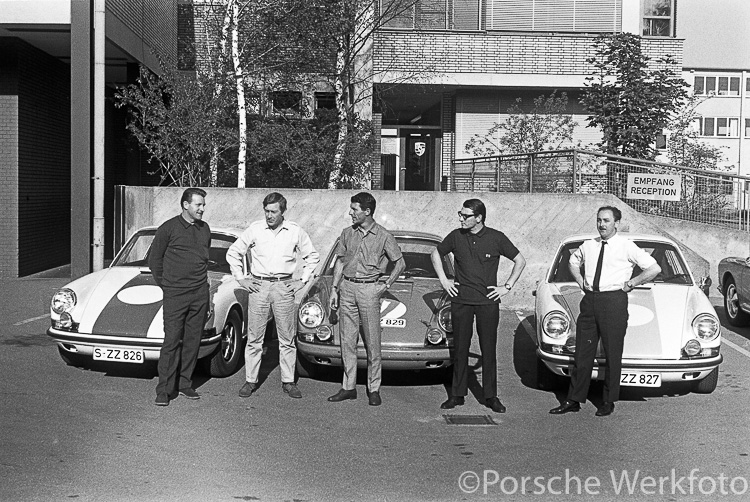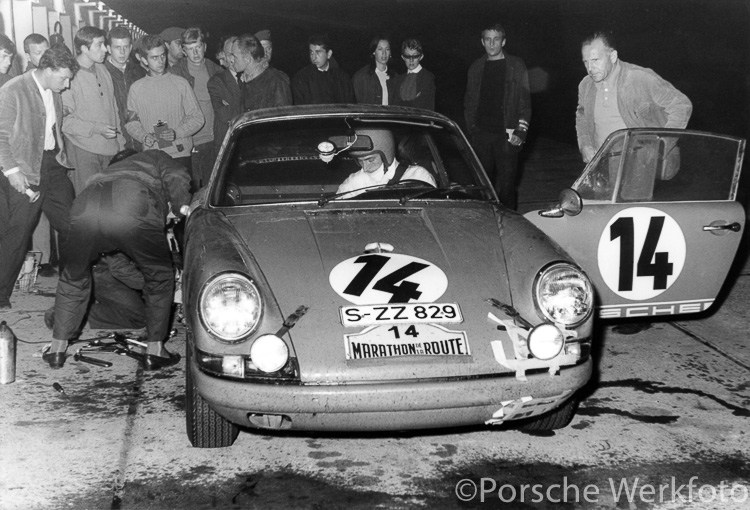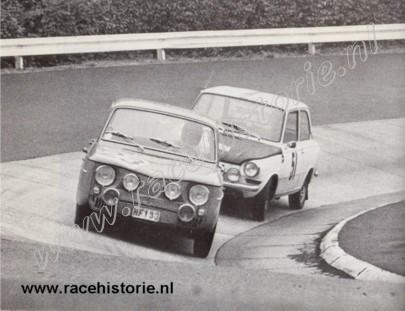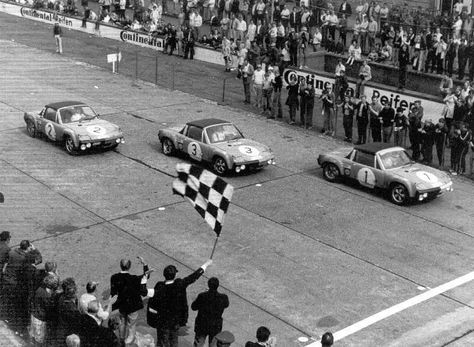All right, time for this list to finally continue! Let’s recap everything, though.
50. Laurens Vanthoor flies at Macau, 2016
49. Crewman brings out the yellow at Atlanta, 2009
48. Jean Alesi’s jumpstart at Bahrain, 2009
47. Ron Burchette’s ARCA brakes at Daytona, 1995
46. Scott Andrews runs out of fuel at Road America, 2020
45. Paul Eaton enters the lake at Mallory Park, 1997
44. Everyone hits the safety vehicles at Zandvoot, 1998
43. Massive fight brings out a taser at Anderson, 2017
42. Peter Braid vaults onto a building at Blandford, 1949
41. Darion Crowder steals the pace car at Talladega, 1986
40. Conceding an unfair win at VIR, 2014
39. Tire roll at Canberra, 2001
38. Bikers brawl at La Guacima, 2019
37. Justin Philpott’s car gets stolen at Altamont, 2006
36. Jared Carlyle hits the steeplechase jump at Pukekohe, 2007
35. Everyone runs out of fuel at Sepang, 2017
34. Hans Heyer illegally starts at Hockenheim, 1977
33. The Mercedes CLR takes off at Le Mans, 1999
32. Bikes get locked and do circles at Magny-Cours, 2011
31. Fire lorry topples over at Brands Hatch, 2011
30. Cars split in half at Bristol, 1990/2002
29. Randy Mamola’s amazing save at Misano, 1985
28. Franz Engstler hits the safety car at Pau, 2009
27. A dumb spectator drives on track at Brands Hatch, 2014
26. School bus drives on track at Austin, 2017
25. Massive tractor trailer pileup at Campo Grande, 2005
24. The big inflatable orange incident at Chicagoland, 2004
23. Bas Schouten’s crew red flags a race at Zandvoort, 2016
22. Traverso’s fiery win at General Roca, 1988
21. Valentino Rossi uses the bathroom while celebrating at Jerez, 1999
20. Buddy Baker’s stretcher roll at Smoky Mountain, 1968
19. Jésus Pareja hits a manhole at Montreal, 1990
18. Velez vs. Fuller at Portland, 1994
17. Porsche leapfrog at Navarra, 2015
16. Twister during a TC Mouras race at La Plata, 2016
15. Silly crash during Roborace at Silverstone, 2020
14. Losing the race and title while celebrating early at Mar Del Plata, ~2000
13. Luca Corberi’s ragequit at South Garda, 2020
12. Neil Horan invades the track at Silverstone, 2003
11. Stephen White breaks into the track at Indy, 1991
10. SUPERCROSS IN THE RAIN AT DAYTONA (2008, AMA SUPERCROSS, DAYTONA)
Often remembered as the greatest AMA Supercross race ever, this was a muddy mess of a show.
Florida’s known for its shaky weather, making it a miracle that the Daytona 500 made it to 2012 without being delayed to Monday. Yet when the AMA Supercross boys showed up to Daytona in 2008, it was to an absolutely soaked, mud-filled mess of a layout – and yet they still went ahead with the race. Some of the ruts on the track were reportedly four feet deep, literally trapping bikes and forcing riders to dig them out and hope their bike hadn’t overheated in the meantime. Lap times were approaching – and even surpassing – two minutes, at a track where, in the dry, 1:25 was considered rather slow. Trey Canard brought home the 10-lap 250cc event, and fans were in for a treat at the 12-lap 450cc.

Chad Reed and Kevin Windham dueled back and forth for the first two laps, only for Reed to stall his bike in a whoops section on lap 3, giving Windham the lead. Windham, who had won another mud race at Anaheim in 2005, led for a lap, but got his bike stuck off a corner on lap four, handing Reed first again. Reed led most of that lap, then went off at a jump. Instead of rejoining where he went off as required, Reed used the runoff to surge back onto the track at the next corner, where he was alongside Windham. He surged back ahead and led for the rest of the race until, with three corners to go, he got stuck in a rut and was forced to sit there while Windham, who had also gone off a few times and had recovered, crossed the line in first. Reed was able to salvage sixth but was moved back to seventh by the AMA due to cutting the track.
The AMA still occasionally races in wet conditions, like with San Diego in 2019, but the Daytona race in 2008 is often remembered by fans as one of a kind.
9. SUPERBIKES ATTEMPT TO RUN MEXICO CITY (1993, WORLD SUPERBIKE, MEXICO CITY)
A huge waste of money this one was.
Autodromo Hermanos Rodriguez is an interesting circuit, right in the middle of Mexico City. It hosted several different series across the years, including Formula One, but by the early 1990s, it wasn’t really looking too great. Formula One left the track in 1992, but in 1993, World Superbike booked a date on the calendar. Things immediately got out of hand due to dreadful transport delays of both the bikes and riders. When the bikes finally got to the track on Friday – three days after they should have been there – there were only a handful of racers willing to run. Scott Russell blasted the terrible crowd control, spotting children playing soccer and baseball in the runoff areas during free practice (some of the soccer balls ended up on the track), and after almost running into a spectator’s truck, he pulled off to the side and seemingly just quit. His teammate, Aaron Slight, almost ran into a stray dog at one point. The pavement was also awful, and many riders were either stuck in transit at the border or were simply on their own in the middle of Mexico.
Only eight riders went out for timed practice on Saturday, which is two more than the six for the weekend to continue, but after a meeting, World Superbike decided it was best to simply pack up and go home, despite local promoters attempting to get at least an exhibition race out of the weekend. World Superbike has never been back.

8. MONTOYA HITS THE JET DRYER (2012, NASCAR CUP, DAYTONA)
The 2012 Daytona 500 was bizarre. A race that had never been delayed by rain was pushed off until Monday night at 19:00, and then things only got stranger from there.

On lap 157, David Stremme’s car blew up, spilling fluids everywhere. A pit stop cycle was conducted on lap 158, and Dave Blaney decided to stay out. Little did he know that he’d soon be trying to persuade the officials to award him the win in the most important race in his life.
After leaving the pit road, Juan Pablo Montoya reported over the radio that he had a bad vibration and was coming back into the pit lane. He hit the pits on lap 159, where the team checked out the car, but they were not able to find anything wrong. Montoya pulled back on track in turn two and sped up to full speed to catch up to the field. While entering turn three, the rear trailing arm on his Chevy Impala broke, sending his car up the track and into a jet dryer, which had been lapping the outside of the circuit in an attempt to clean the fluids spilled. The jet engine in the back was jarred into the air, and it swiftly exploded. The jet fuel was spread down the backing, found a spark in the passing car of Terry Labonte, and began to burn. Juan quickly bailed from the car, and officials quickly helped the jet dryer’s driver, identified as 52-year-old Duane Barnes of Addison, Michigan, from his vehicle. Nobody was injured.
NASCAR looked upon the scene and briefly weighed whether they should bother continuing on with the race, but eventually decided that they could complete the show. After a two-hour cleanup, the race resumed, and Matt Kenseth swiftly got a jump and never looked back. By the time Kenseth took the checkers, it was 02:00 on Tuesday morning. Blaney finished 15th.
Apparently, Montoya – who has moved to sports cars – is frequently reminded of the incident, with even his sponsors unable to help themselves, though the passage of time has lessened things somewhat. Duane Barnes passed away in July 2015 at the age of 55. His cause of death was not given, though it was considered unexpected.
7. TAKI INOUE’S F1 CAREER (1995, FORMULA ONE, MONACO/HUNGARY)
Taki Inoue had a really bad 1995 season…
During the season, he was struck by the course car not once, but twice. First up was at Monaco during practice. The Footwork suffered a failure, and a flatbed lorry started taking him back to the pits, with a towrope towing the car behind it and its nose just atop the flatbed itself. Out of nowhere, the safety car, a Renault Clio who according to autosport was driven by Jean Ragnotti, a rally man, with current FIA President Jean Todt in the passenger seat, rounded the corner and struck the Footwork in the back. The crash lifted the F6ootwork up and sent it onto its lid. Taki had undone his belts and his helmet, though he still kept his helmet on. The crash ended up dumping him partially out of the car, giving him a concussion and several other injuries. The FIA reviewed the incident and blamed either Ragnotti nor Inoue, and said that they would negotiate damages with Footwork. Inoue was allowed to use his second car in qualifying, but he chose to skip qualifying and only run the race itself, which didn’t last very long as the Footwork blew up early on.
Things only got worse for Inoue at the Hungaroring later that year. The car caught fire during the race and he pulled to the side of the road, looking to fetch a fire extinguisher. Once he found one, he ran back, failing to notice the presence of an approaching course car. Oops.

Inoue is retired now, and he’s more than willing to make fun of himself on social media.
6. TREE ON THE TRACK AT BATHURST (2010, BATHURST 12H, BATHURST)
Bathurst is one of the most exciting circuits in the world. Between long straights leading into sharp turns and sweeping esses with heavy elevation changes and little runoff, navigating the Mount Panorama Circuit is one of the biggest accomplishments a driver can have. Winning at this nearly 4 mile raceway is even more incredible.

Rain marred the 2010 Bathurst 12 Hour, the last edition of the race before they switched from production cars to sports cars. About 40% of the race was spent behind the safety car either due to crashes or heavy rain.
Around hour seven of the race, the red flag suddenly waved. Drivers scrambled to find out what was wrong and soon found the issue: a tree had come down at the coincidentally named Forrest’s Elbow, a turn named many years prior when motorcycle racer J. Forrest scraped his elbow away in the 1940s. Thankfully no one was injured, and the only damage was to a spectator’s vehicle according to drive.com.au. The tree was removed with a chainsaw, delaying the race by an hour.
The 2009 edition of the Bathurst 12h completed 239 laps at the end. The 2010 edition, through all its delays, only finished 202.
5. FANS COST CRIVILLÉ THE WIN (1996, MOTOGP, JEREZ)
Do you see what you guys have done?
There’s something about motorsports fans that just makes them wild. In some countries, racing has the same effect upon its fans as football/soccer. There’s also nothing like a local winner. But Alex Crivillé probably is a little bitter. Going into the last lap of the 1996 Spanish Motorcycle Grand Prix, Crivillé was leading his teammate Mick Doohan in front of a crowd that had slowly started going out of control across the past few laps. Jerez’s security had done a poor job that day, made even worse by the track announcer saying that the white flag was actually the checkered, leading a huge gaggle of supporters to storm the track.

As Doohan tried to find room to get by his teammate, fans were actively standing on the curbs, cheering on their hero, seemingly believing the race was over and confused why he wasn’t celebrating already. Entering the last turn, Doohan dove inside Crivillé and the Spaniard, distracted by the fans on the outside, hit the throttle too quickly, leading to a highsider and Crivillé crashing out at the last corner. Doohan cruised to a victory and Crivillé did not finish the event. It was, uh…interesting to see as late as 1996, such poor crowd control reminiscent of an old street race – or any event in Argentina.
4. WHEEL COMES OFF THEN BACK ON (BEFORE 2000, HOBBY STOCKS, BAKERSFIELD)

Featured on an episode of RealTV was an incredible incident at the Bakersfield Speedway, which saw a hobby stock driver by the last name of Nolan or Noland – or something like that – spin in turn three and strike a stalled car. The #5 hobby stock suffered a loose wheel in the incident. As he rounded turn four, the wheel came off the frame and rolled alongside his car for a bit, then rolled back into the car, somehow remounting itself. Of course, the tire was deflated, and the #5 was headed to the pits anyway, but it was still an unforgettable sight.
I was never able to find very much on the incident, so it was time to go searching.
The first source was the track owner, who said he took over in 2003, and it did not occur during his ownership. RealTV ended after 2001, so it wasn’t 2002. Due to the show getting a new host in the middle of 2000, and not the end of the year, I can fully eliminate 2001, and can all but eliminate 2000, though it’s possible that it was in early 2000 and the incident was shown on RealTV in the summer.
I found a driver name in some results dating back to 2000, running a #5 car and possessing a very similar name to what was audibly heard in the clip, that being Raymond Noland, Sr. The Noland family has raced at Bakersfield for years, with Karl, Sr. and Raymond Noland, Sr. both finding a lot of success in the Hobby Stock division. Their sons, Karl, Jr. and Raymond, Jr., respectively, have picked up the torches.
So while the driver is almost certainly Raymond Noland, Sr. and the division is almost certainly Hobby Stocks, I don’t have a year. If you have any further information, let me know.
3. THE PACE CAR CRASH AT INDY (1971, USAC, INDIANAPOLIS)
In 1971, muscle cars were selling poorly, and no one wanted to provide a pace car for the Indianapolis 500. Enter Eldon Palmer, an Indianapolis dealer who headed a local effort to provide the track with several vehicles to choose from. They chose an open-top Dodge Challenger out of the lot, and Eldon was given the position as its driver in return.
Eldon practiced his pace car run the day before, and he decided to set down a marker to indicate when to brake. No one knows what the marker was or if there even was one, but come race day a marker wasn’t there. Not helping the fact was that, apparently, Eldon believed that he would have to beat the field to the line. What he thought would happen if he failed to do so is unknown.
On race day, Eldon, Tony Hulman, ABC broadcaster Chris Schenkel, and special ride-along guest John Glenn all hopped into the pace car and led the field around. As poleman Peter Revson held the inside of the front row and waited for the green, Eldon accelerated down the pit lane, reaching 125mph. He noticed that his marker was not where he thought it was, and mashed the brakes. The Dodge slid sideways and plowed over a photographer’s stand, in an incident that didn’t even warrant a yellow. Many of the photographers on the stand were injured, but amazingly, no one was killed. Schenkel was badly shaken and sat out the broadcast, but did not suffer any broken bones or sprains. Hulman twisted an ankle. Palmer and Glenn were unhurt.

After this, officials decided to solely use professional drivers in the pace car. Eldon eventually sold off the Challenger, which was restored and as of 2014 is in good condition. Eldon Palmer passed away in 2016, at the age of 87.
2. DEN OUDEN ROLLS INTO THE SAFETY CAR (2008, DUTCH SUPERCAR, SPA)
During its heyday, Supercar Challenge, also known as Dutch Supercar Challenge, was one of the most unique series in the world. In it, touring cars, sports cars, and prototypes alike raced alongside one another, sometimes in the same class. This led to some bizarre, yet exciting, photographs, though unfortunately, the series has hit a massive slump.
Shortly after the start of the first race of two during the Spa Euro Races weekend at Spa in 2008, the safety car was warranted when a Porsche spun off course. The safety car, however, ended up picking up second place #103 Arjan Van Der Zwaan (Audi A4 DTM) instead of the leader, #109 Cor Euser (Marcos Marcorelly). Euser took off, with the safety car in hot pursuit, attempting to catch back up. After a minute or two of pure confusion, officials eventually instructed the safety car to pull off to the side of the road and let the field pass it by so it could pick up the leader. It did so at Blanchimont.

As the Seat safety car slowed to a crawl, #138 Paul Hogarth (Lamborghini Gallardo GT3) slammed on the brakes to avoid him. #416 Joost Den Ouden (BMW E36) reacted in the same way, but could not avoid plowing into the back of Hogarth, his car’s brakes being far inferior to that of Hogarth’s. The BMW ramped the Lamborghini, flipped onto its side, slammed into the Seat roof first, sending the Seat off course and into the tire wall, and did several rolls before coming to rest on its door. After a few seconds, #333 José Bermudez De Castro (Marcos Mantis) spun around in avoidance, only for #323 Willy Angenent (BMW Z3 V8) to pile into the Mantis, soon followed by another, unidentified BMW that managed to barely snake its way by. A third BMW, #308 Laurens Gooshouwer (BMW Compact), then plowed headlong into the back of the Mantis with incredible violence. Amazingly, no one was injured, and the driver of the Seat quickly scrambled over the barriers. The race was abandoned shortly thereafter, with Euser being awarded the win.
1. THE GIMLI GLIDER (1983, LOCAL RACING, GIMLI)

On July 23rd, 1983, Air Canada Flight 143 took off from Ottawa, having just refueled on a trip from Montreal to Edmonton. There were 69 aboard, all unaware they’d be in a heart-stopping emergency within an hour or two – simply due to several people using the wrong conversion table.
Canada had recently initiated a switch from Imperial to Metric units, and one of the first companies to see the effects of this switch was Air Canada. Most of their planes used Imperial, but Air Canada Flight 143 was part of a recently-purchased cavalry of Boeing 767s, which used Metric.
Jet fuel’s volume depends on the temperature, so it was impossible to know them by heart. The computer they normally used to calculate fuel loads was out of commission that day according to the National Post, so crews had to do their math with an old-fashioned calculator. The ground crew checked their papers and saw that the conversion factor to kilograms at the current temperature was 1.77, so they multiplied the factor by the number of liters aboard for the current fuel load, subtracted the result from how much fuel in kilograms was needed for how much fuel to add, and divided that result by 1.77 to get the amount of fuel they needed to add. These equations led the ground crew to believe that they only needed to add 5000 liters to the about 8000 already in the tanks.
However, 1.77 was actually the conversion factor for liters into pounds. The actual conversion factor for liters into kilograms was 0.803, and they actually needed 20000 liters, meaning they only had fuel for half the flight. The pilots double-checked and found the conversions to be sound, again using the incorrect factor.
Over western Ontario, the inevitable happened. The plane ran out of fuel in mid-flight and completely lost power, forcing the pilot to glide. By a stroke of luck, he had been trained as a glider, and his co-pilot, upon recognizing that they couldn’t get to Winnipeg, suggested the airbase where he’d been trained, Gimli, Manitoba. He was unaware that it had since been decommissioned, and had become a race track.
While the crowds lined up to watch the start of an open-wheel race, the hulking behemoth came in for an emergency landing. The pilot had not only gotten to Gimli, something Air Canada’s finest were unable to duplicate in a simulator, but he had put the plane on the ground without injury, just a few hundred feet from the race track’s guardrail.
Gimli Motorsports Park’s still open and hasn’t changed very much over the years, a rudimentary track that provides its province a racing experience they can’t get anywhere else. The Glider plane itself has been disassembled, though if you’d like you can purchase a little piece of the plane in the form of a trinket online.




